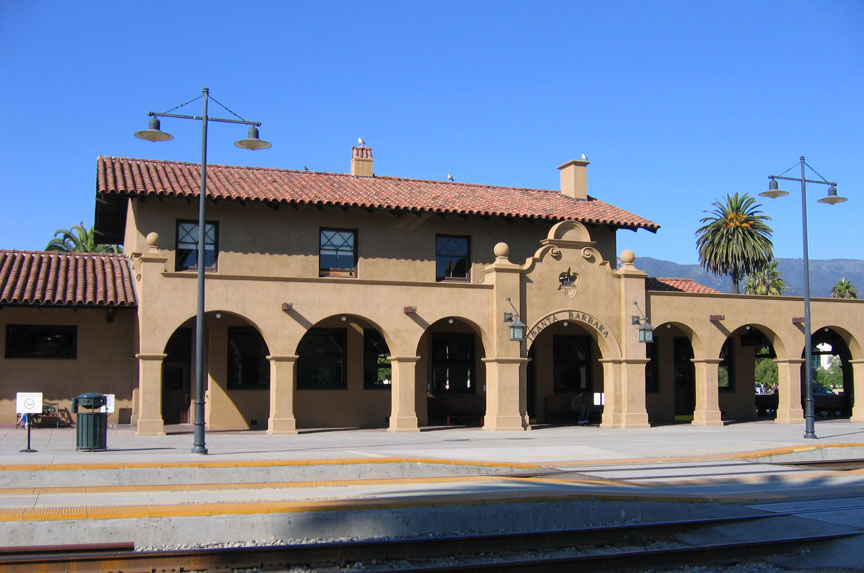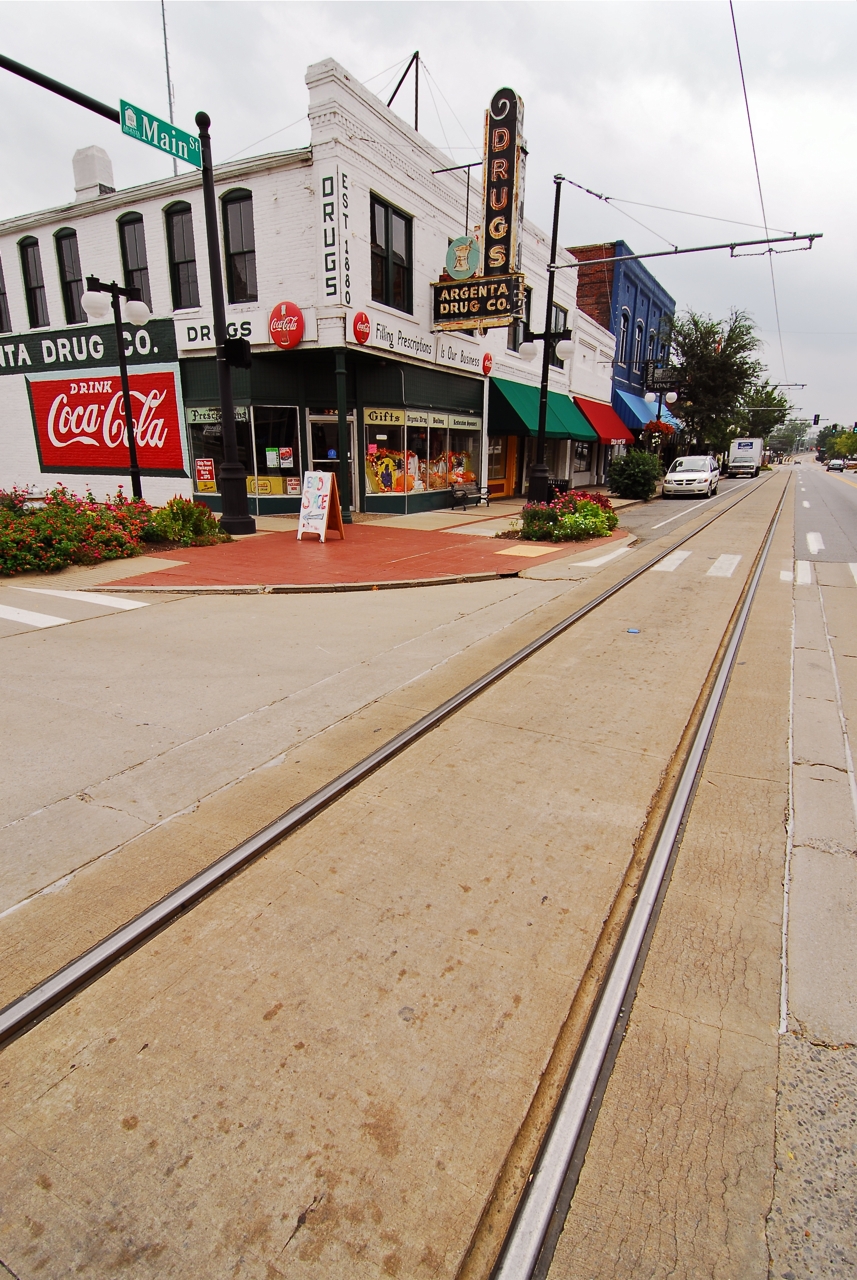|
Park Hill Historic District
The Park Hill Historic District encompasses the first suburban residential subdivision of the city of North Little Rock, Arkansas. It covers in a geographically central part of the city, bisected by JFK Boulevard, and roughly bounded on the north by H Avenue, the west by Ridge Road, the east by Cedar Street and Plainview Circle, and the south by Crestview Drive. This area was developed beginning in 1922 by Justin Matthews, a major local developer, and greatly expanded the city's housing stock through the 1940s and 1950s. The vast majority of its architecture is residential, with commercial development limited to its major arterial roadways. The district includes Crestview Park and the Park Hill Fire Station and Water Company Complex. The district was listed on the National Register of Historic Places in 2000. See also *National Register of Historic Places listings in Pulaski County, Arkansas __NOTOC__ This is a list of the National Register of Historic Places listings ... [...More Info...] [...Related Items...] OR: [Wikipedia] [Google] [Baidu] |
National Register Of Historic Places Listings In Pulaski County, Arkansas
__NOTOC__ This is a list of the National Register of Historic Places listings in Pulaski County, Arkansas. This is intended to be a complete list of the properties and districts on the National Register of Historic Places in Pulaski County, Arkansas, United States. The locations of National Register properties and districts for which the latitude and longitude coordinates are included below, may be seen in a map. There are 352 properties and districts listed on the National Register in the county, including 5 National Historic Landmarks. The 86 properties and districts that are located outside of Little Rock (including one National Historic Landmark) are listed here, while the sites in Little Rock are listed separately. Another 26 properties in the county have been removed, including 6 outside Little Rock. Current listings Little Rock Exclusive of Little Rock Former listings ... [...More Info...] [...Related Items...] OR: [Wikipedia] [Google] [Baidu] |
Bungalow
A bungalow is a small house or cottage that is either single-story or has a second story built into a sloping roof (usually with dormer windows), and may be surrounded by wide verandas. The first house in England that was classified as a bungalow was built in 1869. In America it was initially used as a vacation architecture, and was most popular between 1900 and 1918, especially with the Arts and Crafts movement. The term bungalow is derived from the word and used elliptically to mean "a house in the Bengal style." Design considerations Bungalows are very convenient for the homeowner in that all living areas are on a single-story and there are no stairs between living areas. A bungalow is well suited to persons with impaired mobility, such as the elderly or those in wheelchairs. Neighborhoods of only bungalows offer more privacy than similar neighborhoods with two-story houses. As bungalows are one or one and a half stories, strategically planted trees and shrubs ... [...More Info...] [...Related Items...] OR: [Wikipedia] [Google] [Baidu] |
American Craftsman
American Craftsman is an American domestic architectural style, inspired by the Arts and Crafts movement, which included interior design, landscape design, applied arts, and decorative arts, beginning in the last years of the 19th century. Its immediate ancestors in American architecture are the Shingle style architecture, Shingle style, which began the move away from Victorian ornamentation toward simpler forms; and the Prairie style of Frank Lloyd Wright. The name "Craftsman" was appropriated from furniture-maker Gustav Stickley, whose magazine ''The Craftsman'' was first published in 1901. The architectural style was most widely used in small-to-medium-sized Southern California single-family homes from about 1905, so that the smaller-scale Craftsman style became known alternatively as " California bungalow". The style remained popular into the 1930s, and has continued with revival and restoration projects through present times. Influences The American Craftsman style was ... [...More Info...] [...Related Items...] OR: [Wikipedia] [Google] [Baidu] |
Mission Revival
The Mission Revival style was part of an architectural movement, beginning in the late 19th century, for the revival and reinterpretation of American colonial styles. Mission Revival drew inspiration from the late 18th and early 19th century Spanish missions in California. It is sometimes termed California Mission Revival, particularly when used elsewhere, such as in New Mexico and Texas which have their own unique regional architectural styles. In Australia, the style is known as Spanish Mission. The Mission Revival movement was most popular between 1890 and 1915, in numerous residential, commercial and institutional structures, particularly schools and railroad depots. Influences All of the 21 Franciscan Alta California missions (established 1769–1823), including their chapels and support structures, shared certain design characteristics. These commonalities arose because the Franciscan missionaries all came from the same places of previous service in Spain and colonia ... [...More Info...] [...Related Items...] OR: [Wikipedia] [Google] [Baidu] |
Spanish Revival
The Spanish Colonial Revival Style ( es, Arquitectura neocolonial española) is an architectural stylistic movement arising in the early 20th century based on the Spanish Colonial architecture of the Spanish colonization of the Americas. In the United States, the Panama-California Exposition of 1915 in San Diego, highlighting the work of architect Bertram Goodhue, is credited with giving the style national exposure. Embraced principally in California and Florida, the Spanish Colonial Revival movement enjoyed its greatest popularity between 1915 and 1931. In Mexico, the Spanish Colonial Revival in architecture was tied to the nationalist movement in arts encouraged by the post-Mexican Revolution government. The Mexican style was primarily influenced by the Baroque architecture of central New Spain, in contrast to the U.S. style which was primarily influenced by the northern missions of New Spain. Subsequently, the U.S. interpretation saw popularity in Mexico and was locally ter ... [...More Info...] [...Related Items...] OR: [Wikipedia] [Google] [Baidu] |
North Little Rock, Arkansas
North Little Rock is a city in Pulaski County, Arkansas, across the Arkansas River, Arkansas from Little Rock, Arkansas, Little Rock in the central part of the state. The population was 64,591 at the 2020 United States Census, 2020 census. In 2019 the estimated population was 65,903, making it the seventh-most populous city in the state. North Little Rock, along with Little Rock, Arkansas, Little Rock and Conway, Arkansas, Conway, anchors the six-county Little Rock–North Little Rock–Conway Little Rock-North Little Rock-Conway metropolitan area, Metropolitan Statistical Area (2014 population 729,135), which is further included in the Little Rock-North Little Rock Central Arkansas, Combined Statistical Area with 902,443 residents. The city's downtown is anchored in the Argenta Historic District, the location of Dickey-Stephens Park, home of the Arkansas Travelers minor league baseball team, and Simmons Bank Arena, the metropolitan area's main entertainment venue. Farth ... [...More Info...] [...Related Items...] OR: [Wikipedia] [Google] [Baidu] |
Justin Matthews
Justin Matthews (1876–1955) was an Arkansas road and bridge builder and real estate developer. He helped to design and expand many areas in central Arkansas. Background Matthews was born in 1876 near Monticello, Arkansas. He was formally trained as a pharmacist but prospered in cottonseed oil. In 1911, he moved to Little Rock, Arkansas, where he built roads and bridges and invested in and developed real estate on the north side of the Arkansas River. Development projects Matthews laid the foundation for the development of North Little Rock by paving 152 blocks of muddy land on the north shore of the Arkansas River across from Little Rock. In 1914, he established an improvement district to install stormwater and sanitary sewer lines in the area, which is known as the Argenta neighborhood of North Little Rock. He built houses, office buildings, and retail shops there throughout the 1910s. In the 1920s and 1930s, Matthews developed the Park Hill and Lakewood neighborhoods in Nort ... [...More Info...] [...Related Items...] OR: [Wikipedia] [Google] [Baidu] |
Crestview Park
Crestview Park is a small neighborhood park in North Little Rock, Arkansas. It is roughly bounded by Cherry Hill Drive, Crestview Drive, and the westbound onramp to Interstate 40 from Arkansas Highway 107. The park, set on a steeply sloping parcel, has no major amenities, and was established for passive recreational uses of the nearby population. The park is notable for the presence of two naturalistic sculptures by Dionicio Rodriguez that were installed . One is a footbridge that appears to have been fashioned out of a fallen tree, and the other is rustic shelter, one of Rodriguez' more unusual works. The artwork within the park was listed on the National Register of Historic Places in 1986. Crestview Park, Concrete Shelter.JPG, Concrete Shelter at Crestview Park Crestview Park, Concrete Bridge.JPG, Concrete Bridge at Crestview Park See also *National Register of Historic Places listings in Pulaski County, Arkansas __NOTOC__ This is a list of the National Register ... [...More Info...] [...Related Items...] OR: [Wikipedia] [Google] [Baidu] |
Park Hill Fire Station And Water Company Complex
The Park Hill Fire Station and Water Company Complex is a collection of historic public facilities at 3417-21 Magnolia Street in North Little Rock, Arkansas. The complex consists of a fire station, a water company office, two concrete reservoirs, and two stone pump houses, all built in 1938 with funding support from the Works Progress Administration. The fire station and water company office are distinguished architecturally by their fieldstone exteriors and Mediterranean style, including red tiled roofs. They were designed by the Little Rock firm of Brueggeman, Swaim and Allen. The complex was listed on the National Register of Historic Places in 1993. See also * Old Central Fire Station (North Little Rock, Arkansas) * National Register of Historic Places listings in Pulaski County, Arkansas __NOTOC__ This is a list of the National Register of Historic Places listings in Pulaski County, Arkansas. This is intended to be a complete list of the properties and districts on ... [...More Info...] [...Related Items...] OR: [Wikipedia] [Google] [Baidu] |
National Register Of Historic Places
The National Register of Historic Places (NRHP) is the United States federal government's official list of districts, sites, buildings, structures and objects deemed worthy of preservation for their historical significance or "great artistic value". A property listed in the National Register, or located within a National Register Historic District, may qualify for tax incentives derived from the total value of expenses incurred in preserving the property. The passage of the National Historic Preservation Act (NHPA) in 1966 established the National Register and the process for adding properties to it. Of the more than one and a half million properties on the National Register, 95,000 are listed individually. The remainder are contributing resources within historic districts. For most of its history, the National Register has been administered by the National Park Service (NPS), an agency within the U.S. Department of the Interior. Its goals are to help property owners and inte ... [...More Info...] [...Related Items...] OR: [Wikipedia] [Google] [Baidu] |
Historic Districts On The National Register Of Historic Places In Arkansas
History (derived ) is the systematic study and the documentation of the human activity. The time period of event before the invention of writing systems is considered prehistory. "History" is an umbrella term comprising past events as well as the memory, discovery, collection, organization, presentation, and interpretation of these events. Historians seek knowledge of the past using historical sources such as written documents, oral accounts, art and material artifacts, and ecological markers. History is not complete and still has debatable mysteries. History is also an academic discipline which uses narrative to describe, examine, question, and analyze past events, and investigate their patterns of cause and effect. Historians often debate which narrative best explains an event, as well as the significance of different causes and effects. Historians also debate the nature of history as an end in itself, as well as its usefulness to give perspective on the problems of the p ... [...More Info...] [...Related Items...] OR: [Wikipedia] [Google] [Baidu] |
.jpg)





.jpg)